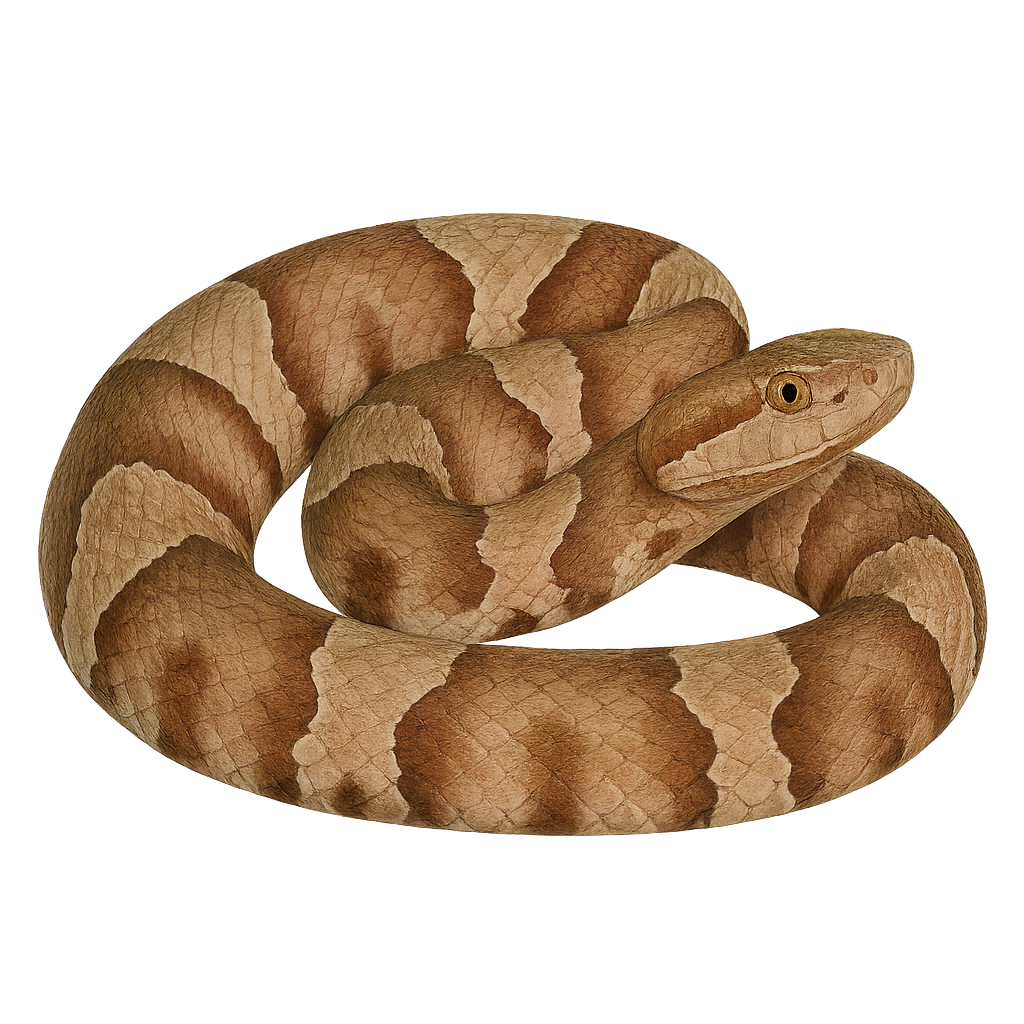Your wildlife photography guide.
Explore the copperhead in detail, study its behavior, prepare your shots.
Where to observe and photograph the copperhead in the wild
Learn where and when to spot the copperhead in the wild, how to identify the species based on distinctive features, and what natural environments it inhabits. The WildlifePhotographer app offers tailored photography tips that reflect the copperhead’s behavior, helping you capture better wildlife images. Explore the full species profile for key information including description, habitat, active periods, and approach techniques.
Copperhead
Scientific name: Agkistrodon contortrix

IUCN Status: Least Concern
Family: VIPERIDAE
Group: Reptiles
Sensitivity to human approach: Suspicious
Minimum approach distance: 5 m
Reproduction period: November to December
Incubation: 83–150 jours
Births: November to December
Habitat:
Forests, rocky areas, grasslands
Activity period :
Mainly active at night, generally discreet during the day.
Identification and description:
The Agkistrodon contortrix, commonly known as the Copperhead, is a venomous snake native to the United States. It is identifiable by its coppery brown coloration with darker crossbands. This snake prefers wooded habitats, rocky areas, and grasslands. Although venomous, its bite is rarely fatal to humans but can cause intense pain and requires medical attention. The Copperhead is a relatively discreet snake that prefers to avoid confrontations. It primarily feeds on small rodents, birds, and insects. Its ability to remain still and camouflaged in its environment makes it difficult to spot.
Recommended lens:
400 mm – adjust based on distance, desired framing (portrait or habitat), and approach conditions.
Photography tips:
To photograph the Agkistrodon contortrix, it is advisable to use a telephoto lens of 400 mm or more to capture detailed images from a safe distance. Look for it in wooded areas or near rocks where it often camouflages. Be patient and attentive to its crepuscular behavior. Avoid getting too close to avoid disturbing it and for your own safety.
The WildlifePhotographer App is coming soon!
Be the first to explore the best nature spots, track rutting seasons, log your observations, and observe more wildlife.
Already 1 432 wildlife lovers subscribed worldwide

